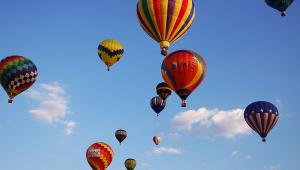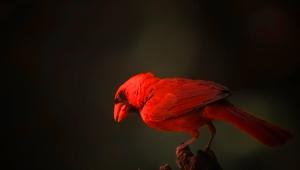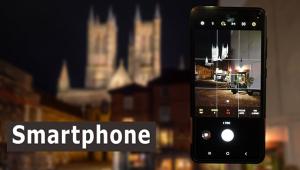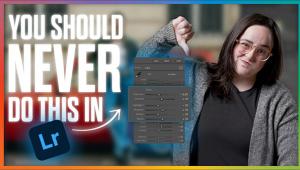Samsung’s Digimax Pro815; Not For Pros, But For Everyone
Samsung's Digimax Pro815 features several digital camera firsts, including the world's longest optical zoom lens--and it's a Schneider, too--and the largest LCD preview screen. It's all wrapped up in a Mad Max-design that looks like a digital SLR, except it's not. The Digimax Pro815 is an 8-megapixel fixed lens camera that provides three ways of looking at images, including that big preview screen, an electronic viewfinder, and, shades of Franke & Heidecke, a waist-level finder.
 |
Look And Feel
The 15x Schneider f/2.2-4.6 zoom offers the equivalent of a 28-420mm lens and
when combined with the Pro815's 4x (mostly useless) digital zoom produces
a combined zoom of 60x. The fixed lens has four low-dispersion glass elements
designed to minimize chromatic aberration and two aspherical elements to correct
spherical aberration and lateral color shift. There's no Image Stabilization
per se, but the Pro815 automatically increases ISO sensitivity depending on
ambient exposure and lens focal length. This system works surprisingly well
and I was able to get sharp images handheld at the 420mm (equivalent) focal
length.
 |
|
|
At 3.5" the Pro815 has the largest available LCD preview screen available
on a digital camera--at least so far. The screen incorporates Samsung's
TMR (Transmissive Micro Reflective) technology that's not as sharp as
I would have liked but it's large enough to display 25 thumbnails, allowing
you to quickly search for a desired picture. The LCD features a histogram for
checking and adjusting exposure, and the ability to overlay a Rule-of-Thirds
grid for image composition. A Review Shot mode lets you compose a new image
while viewing an image just taken a la Picture-in-Picture on your TV. When making
low angle shots, a 1.44" LCD waist-level screen displays a real-time preview
or can alternately display shooting data. That big screen means big power requirements
and the Digimax uses a chunky and proprietary lithium battery that's capable
of providing enough power for up to 500 shots per charge, depending, of course,
on your personal chimping habits.
In The Field
When capturing JPEG files, the Digimax Pro815 is responsive. Its start up and
shot-to-shot speeds are 1 second and 1.3 seconds respectively and shutter lag
is .05 seconds. The Pro815 uses a passive AF sensor to produce a fast AF speed
of less than 1 second. The combination mechanical and electronic shutter captures
JPEG images at up to 1/4000 sec in 2.5 fps (frames per second) or ultrahigh-speed
continuous shooting that allows you to shoot up to 10 1-megapixel images per
second. Single images can be captured at up to 5MB (3072x2304 pixels) and saved
in raw or TIFF formats, although write time to the CompactFlash card is considerably
longer with these files. Even when using a blazing fast 133x (with Write Acceleration)
Lexar Professional 2GB card, the fastest raw capture took 12 seconds. TIFFs
took longer. When the camera indicates it is "processing" the image
nothing else happens, so you gotta wait.
 |
|
|
Like the Leica D-Lux 2 (Shutterbug, May 2006), the Digimax Pro815 lets you
shoot using three visual formats: L (3264x2448), 3:2 (3264x2176), and HDTV's
16:9 (3264x1840). Unlike the Leica, whose maximum resolution is achieved in
16:9 mode, the Pro815 merely crops the full-size image to achieve the other
formats. This is something you could always accomplish later using an image-editing
program, but I found it convenient to capture 16:9 images in camera.
The Digimax Pro815 includes exposure settings options for Auto, Program, Aperture
Preferred, Shutter Speed Preferred, Manual, and a gaggle of Scene modes, including
Night, Portrait, Children, Landscape, Close-up, Sunset, Dawn, Backlight, Fireworks,
Beach & Snow, and Text. In Text mode, you can shoot documents (shades of
Alias' Sydney Bristow) and the camera compensates for distortion while
photographing flat objects. Samsung bundles Digimax Reader text recognition
software to extract that text and lets you save it as an editable document.
Continuing its kitchen sink approach to features, the Pro815 offers bracketing
capabilities for exposure, focus, and white balance. Built-in white balance
settings include Auto, Daylight, Cloudy, Fluorescent, Tungsten, and Custom.
An Effects menu lets you capture images in Normal, B&W, Sepia, and Negative.
 |
|
|
The lens has an MF focus ring that permits direct manual focusing, allowing
you to instantly switch from automatic to manual focusing. The camera's
AF focusing modes include AF Lock, Continuous AF, and Select Area AF. For flash
photography, shooters can utilize the Pro815's pop-up flash that offers
multiple flash modes, such as Auto, Auto & Redeye Reduction, Slow Sync &
Redeye Reduction, Fill, and Flash Off. Need a little more power? You can attach
the optional SEF-42A (GN 42) flash to the camera's hot shoe.
- Log in or register to post comments

































